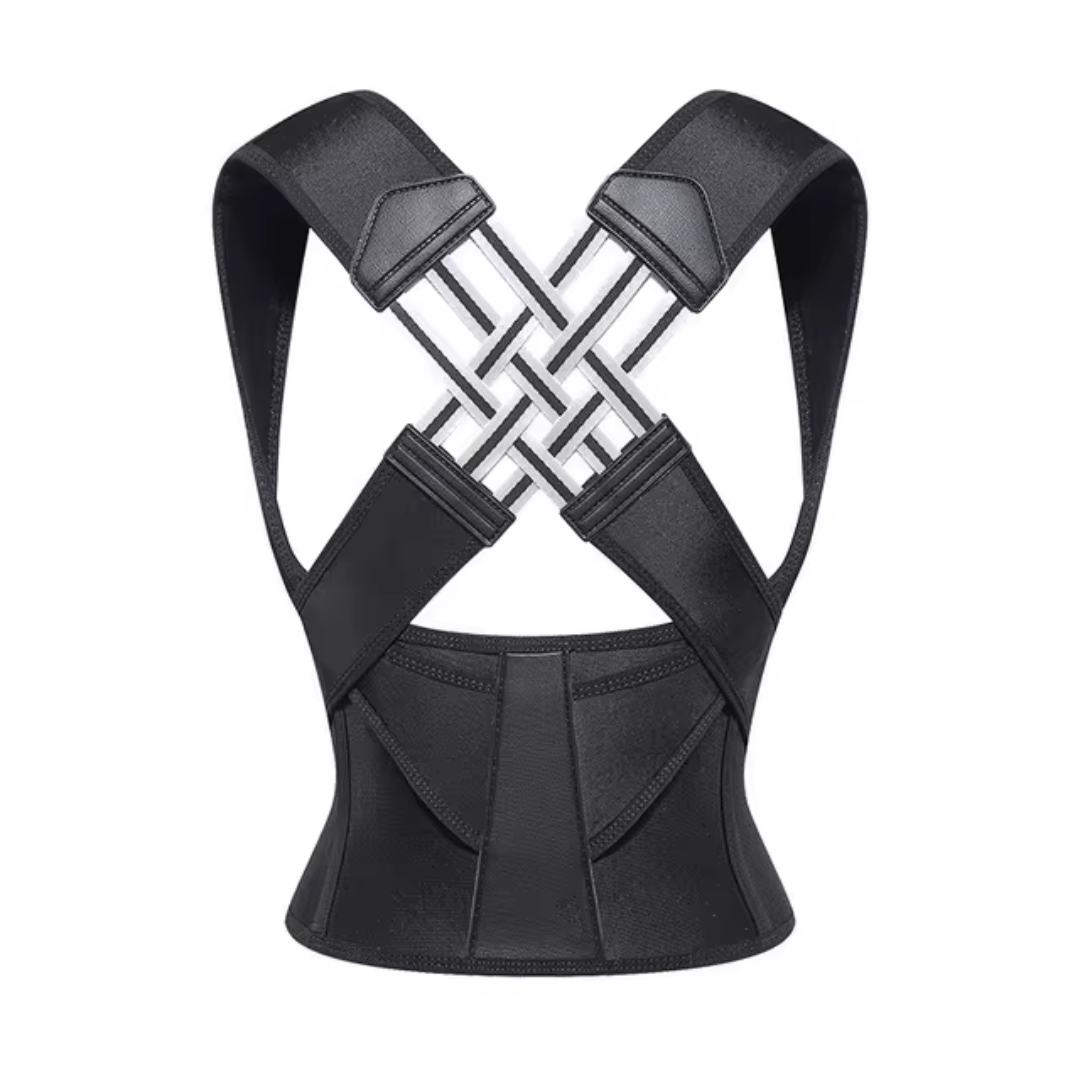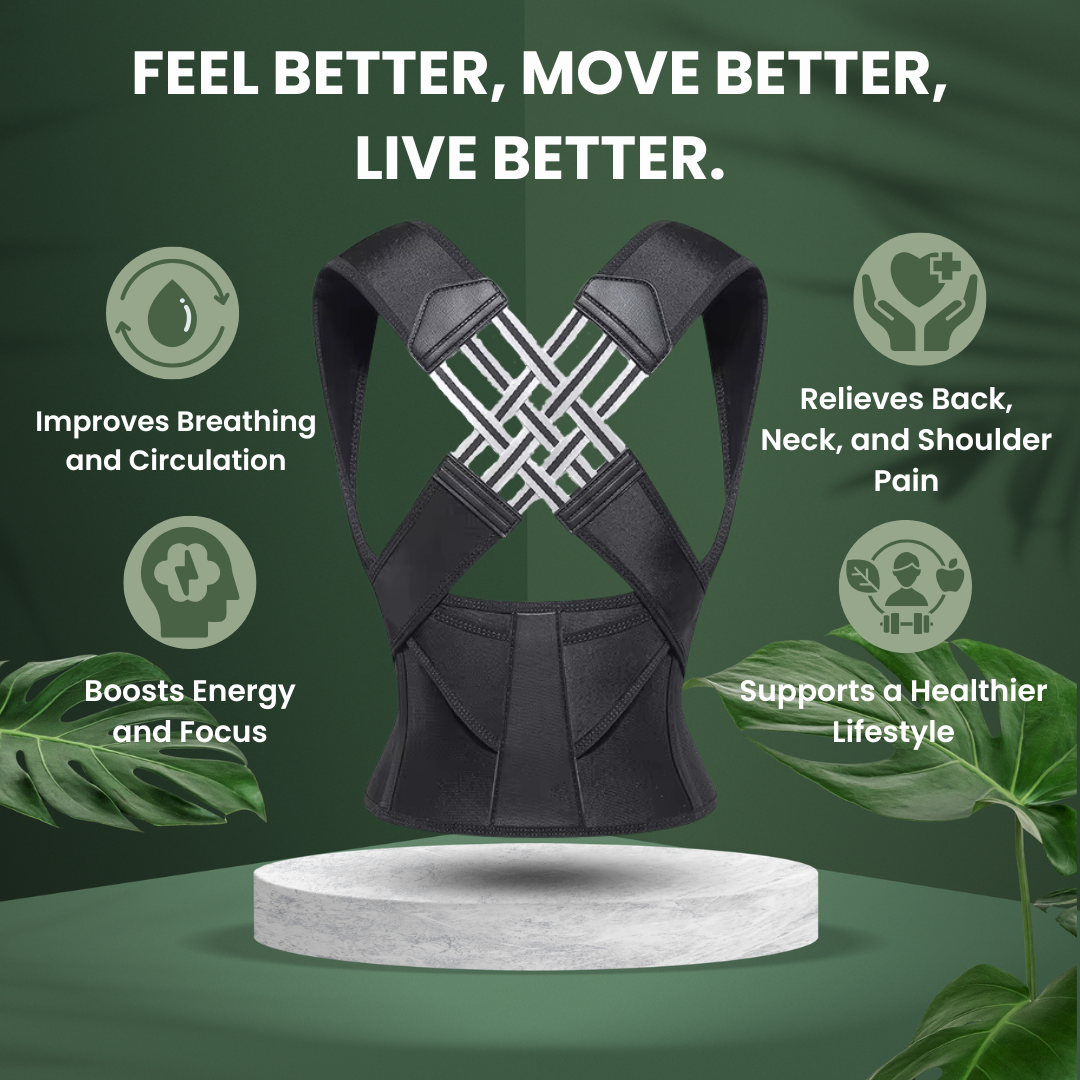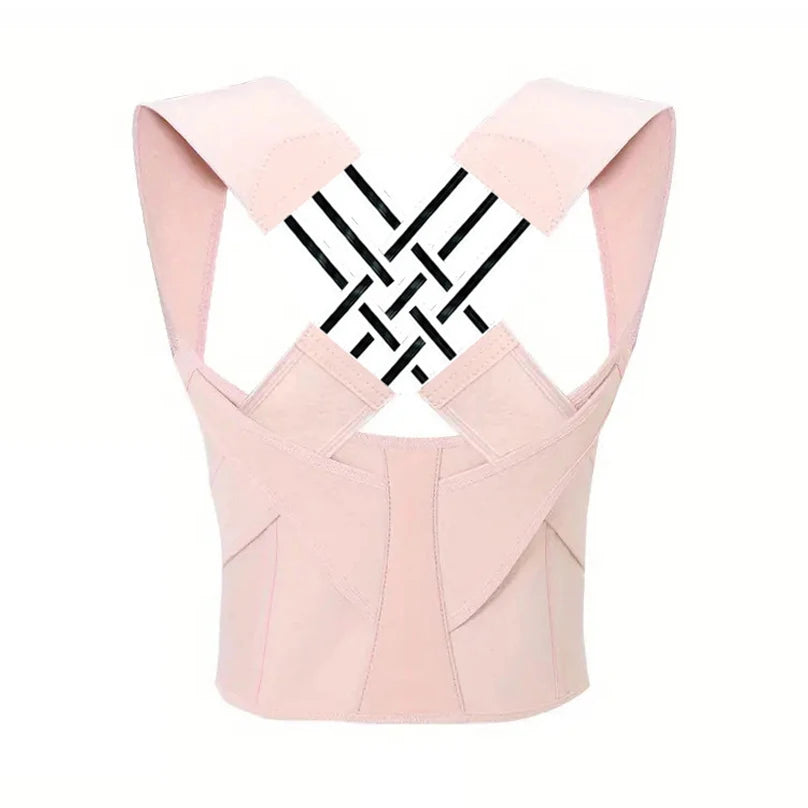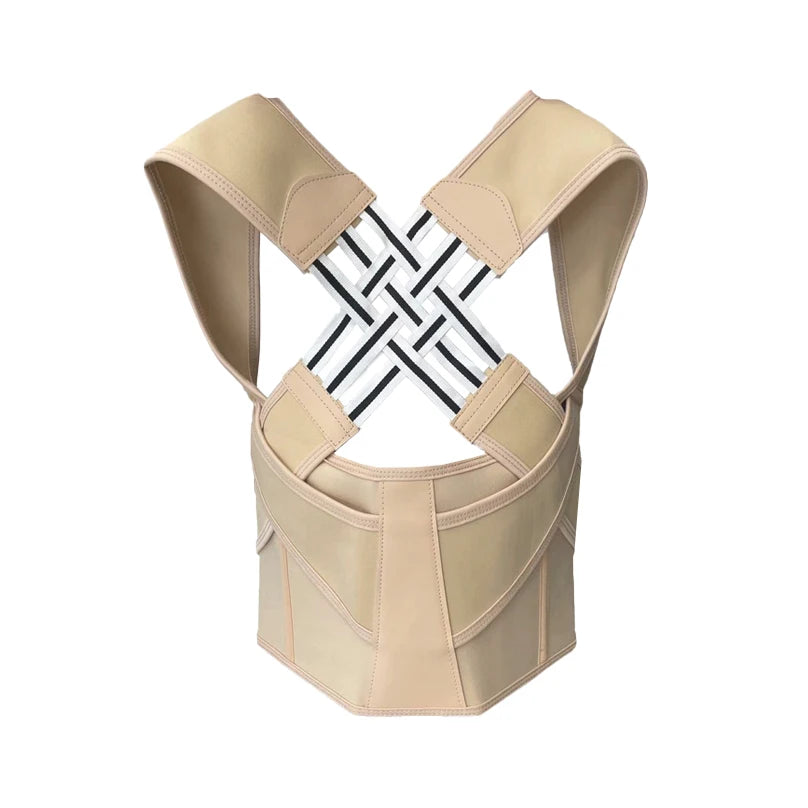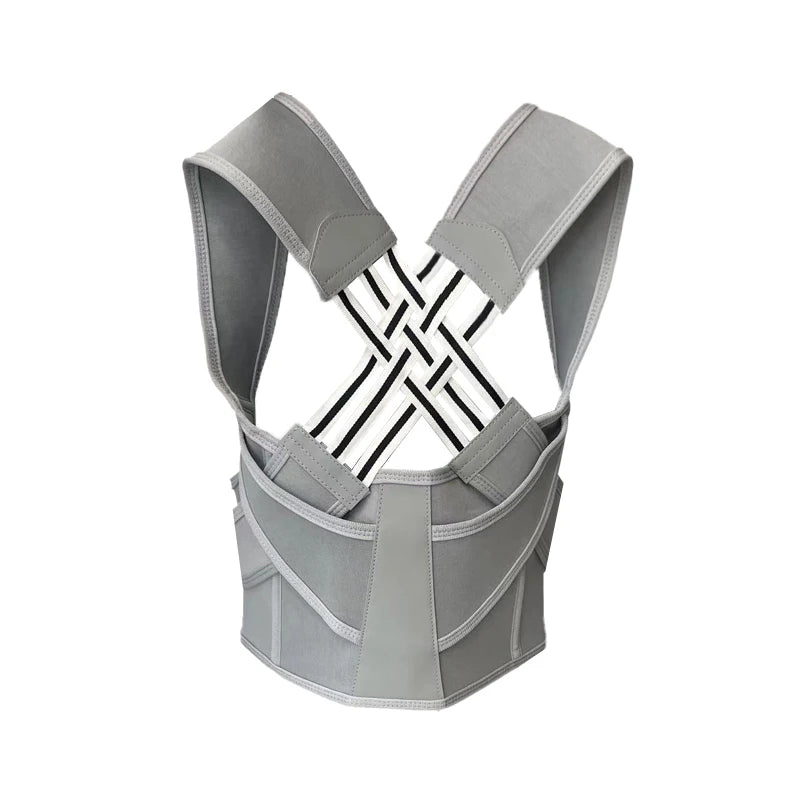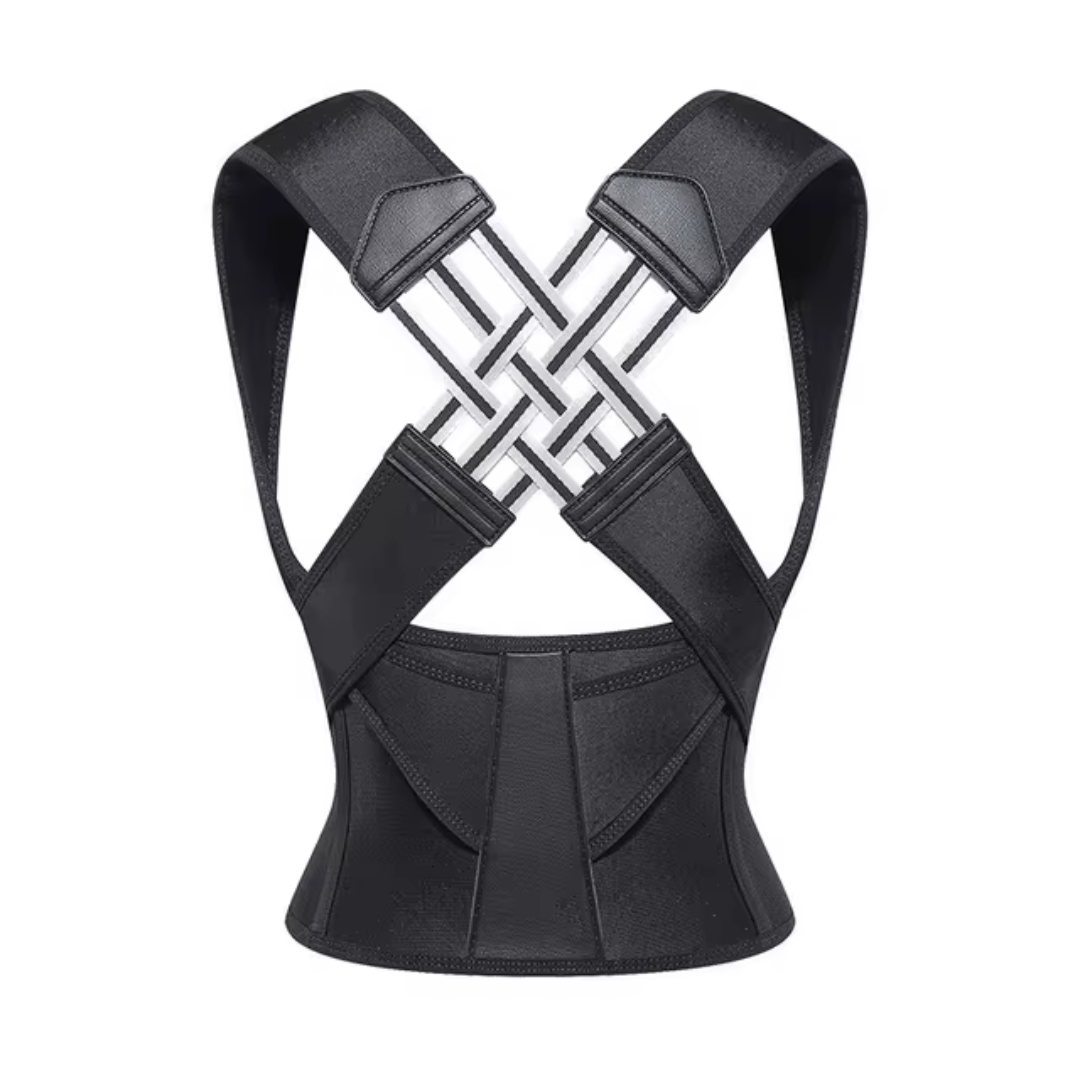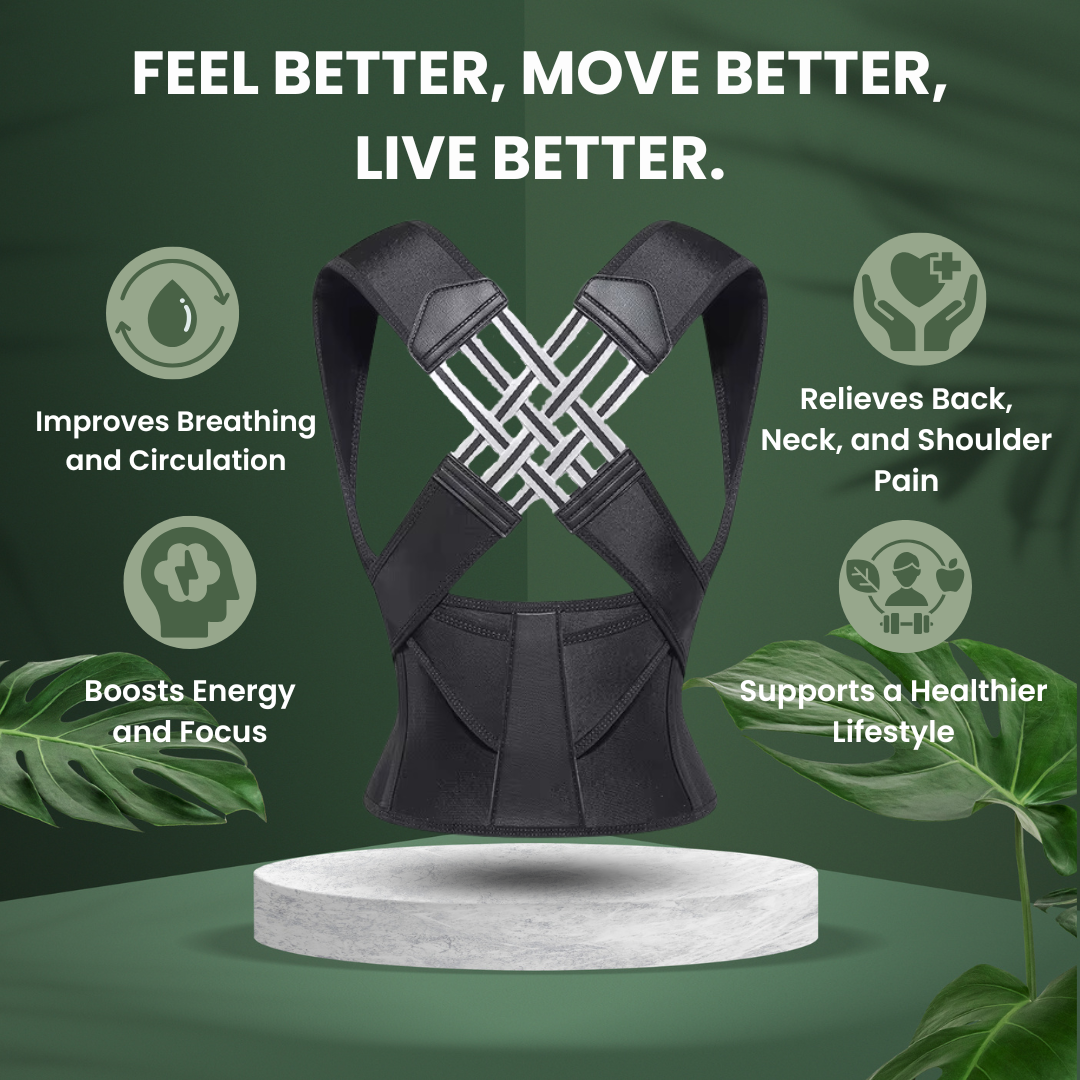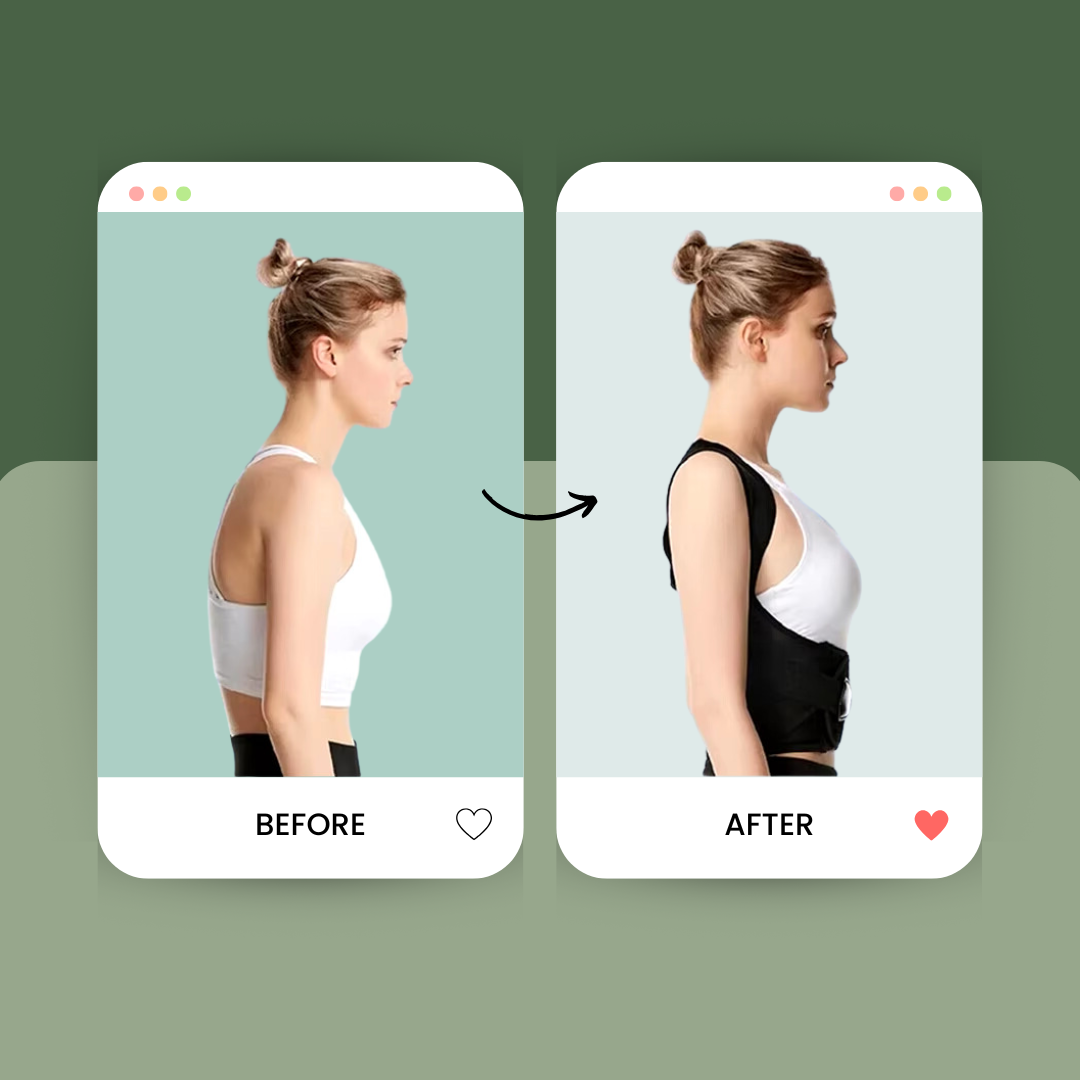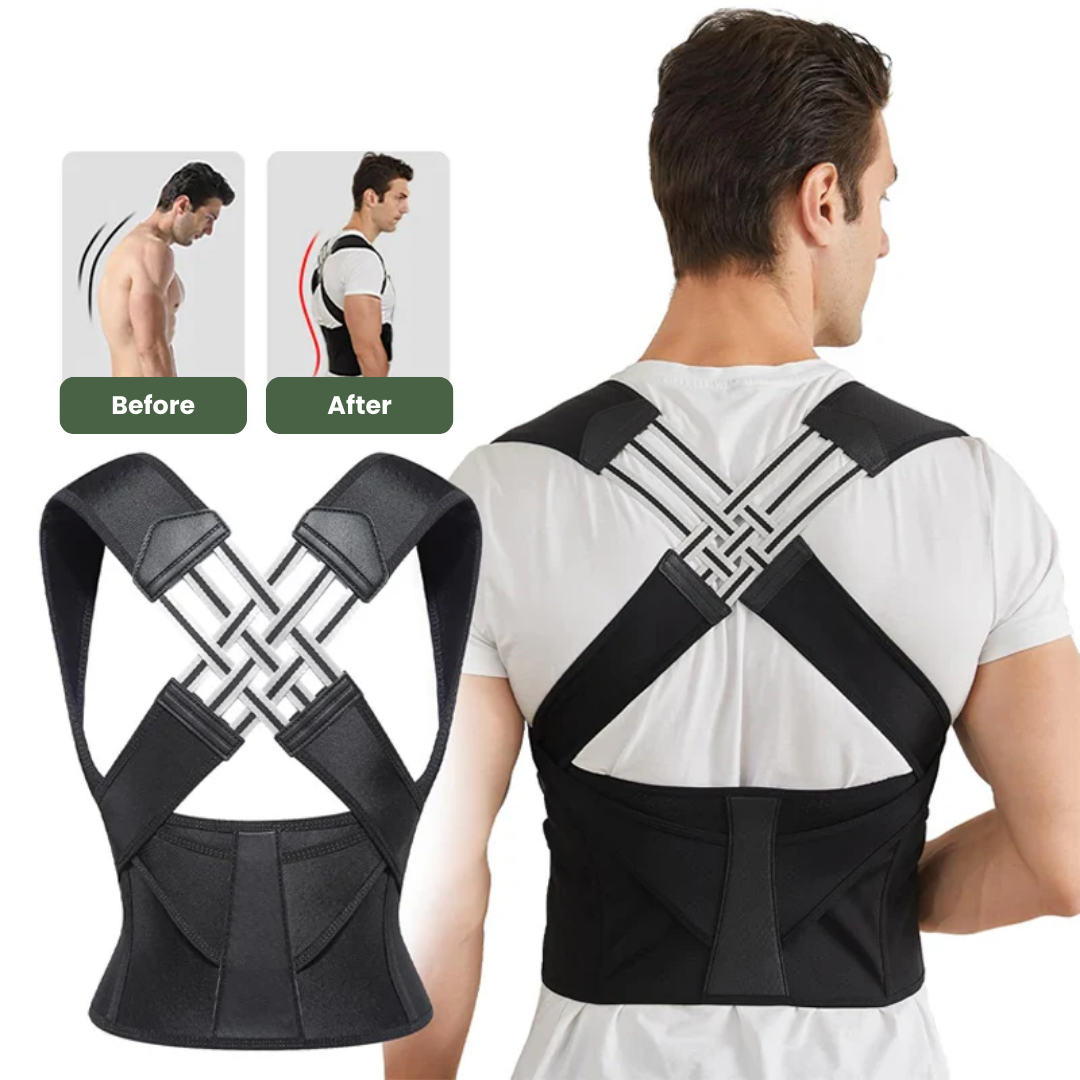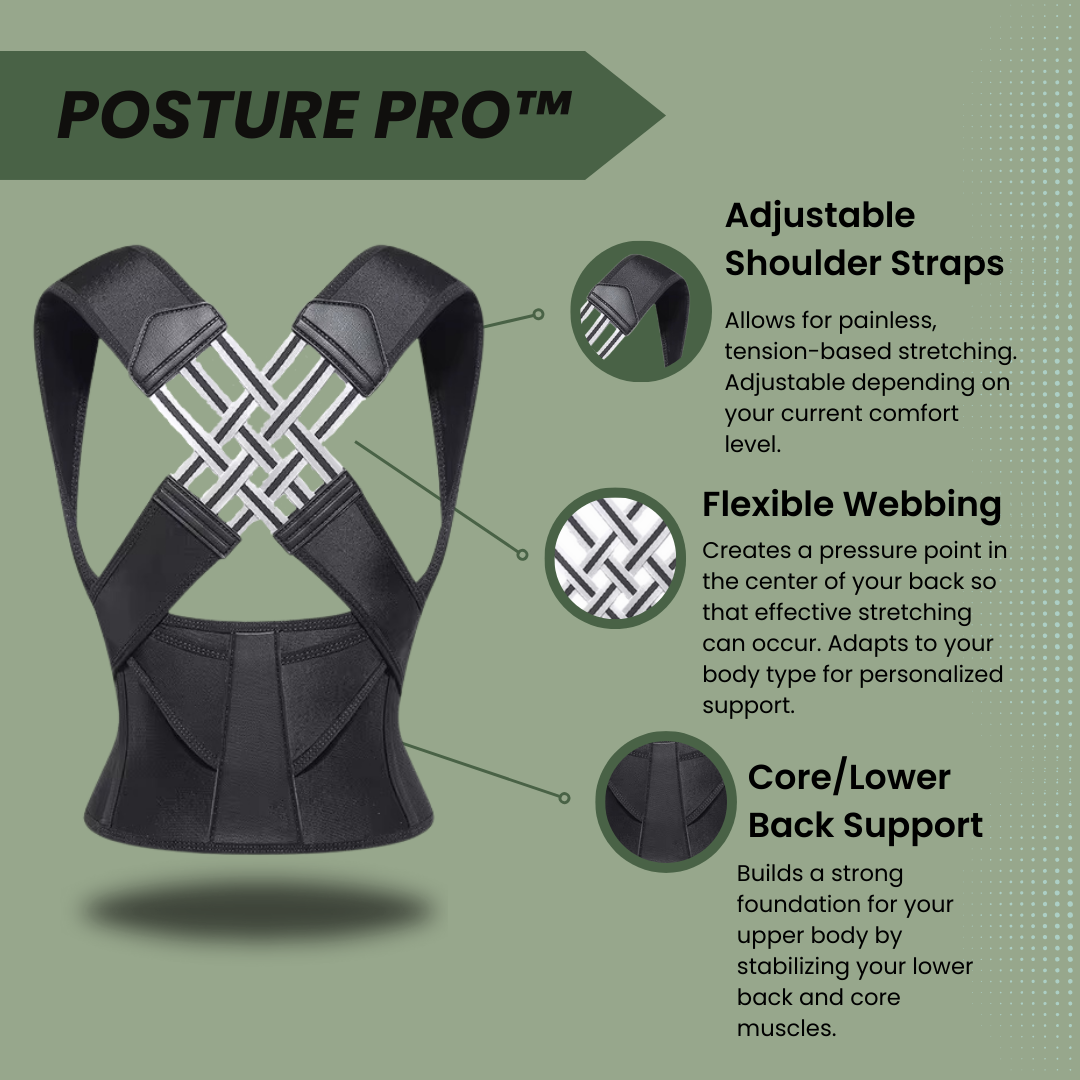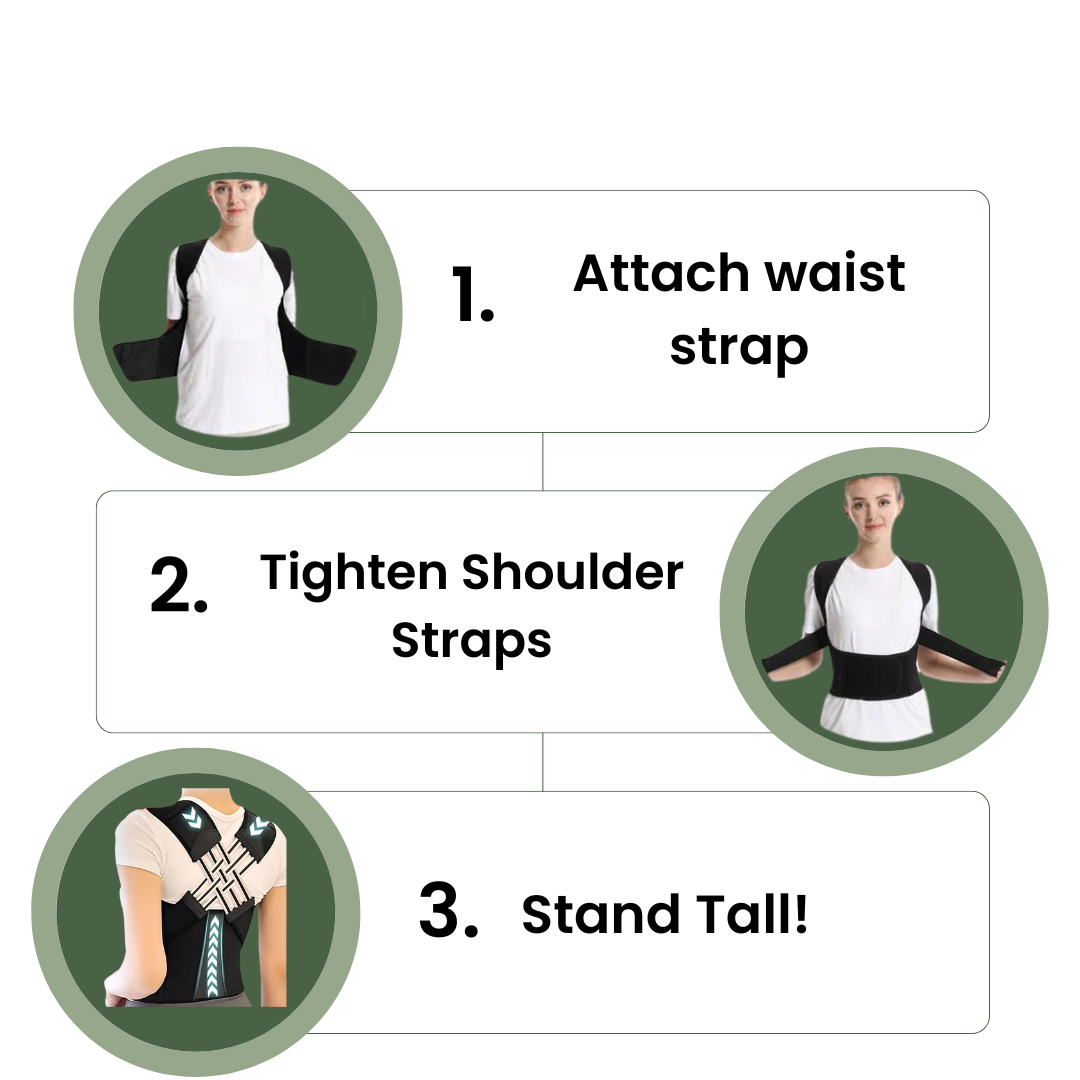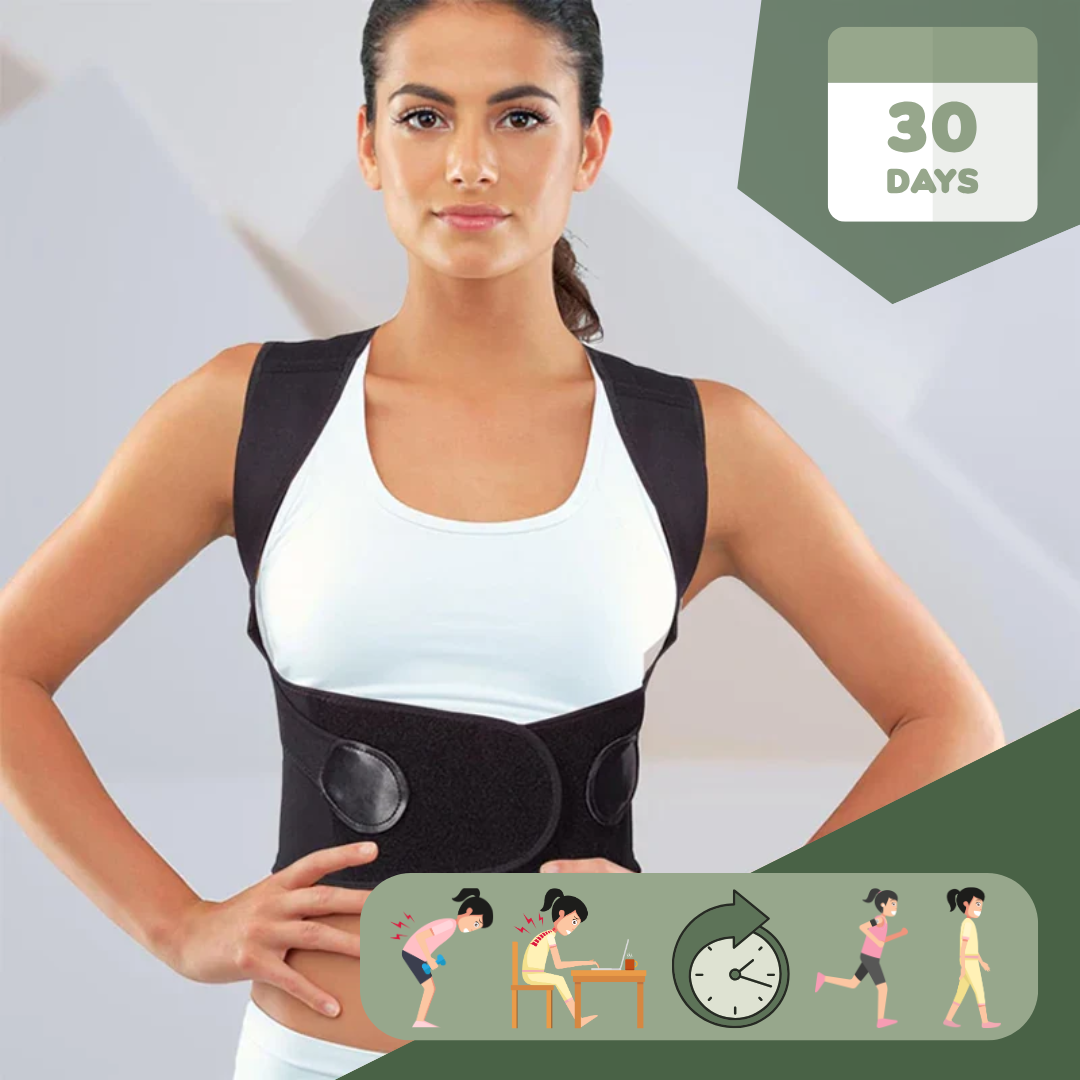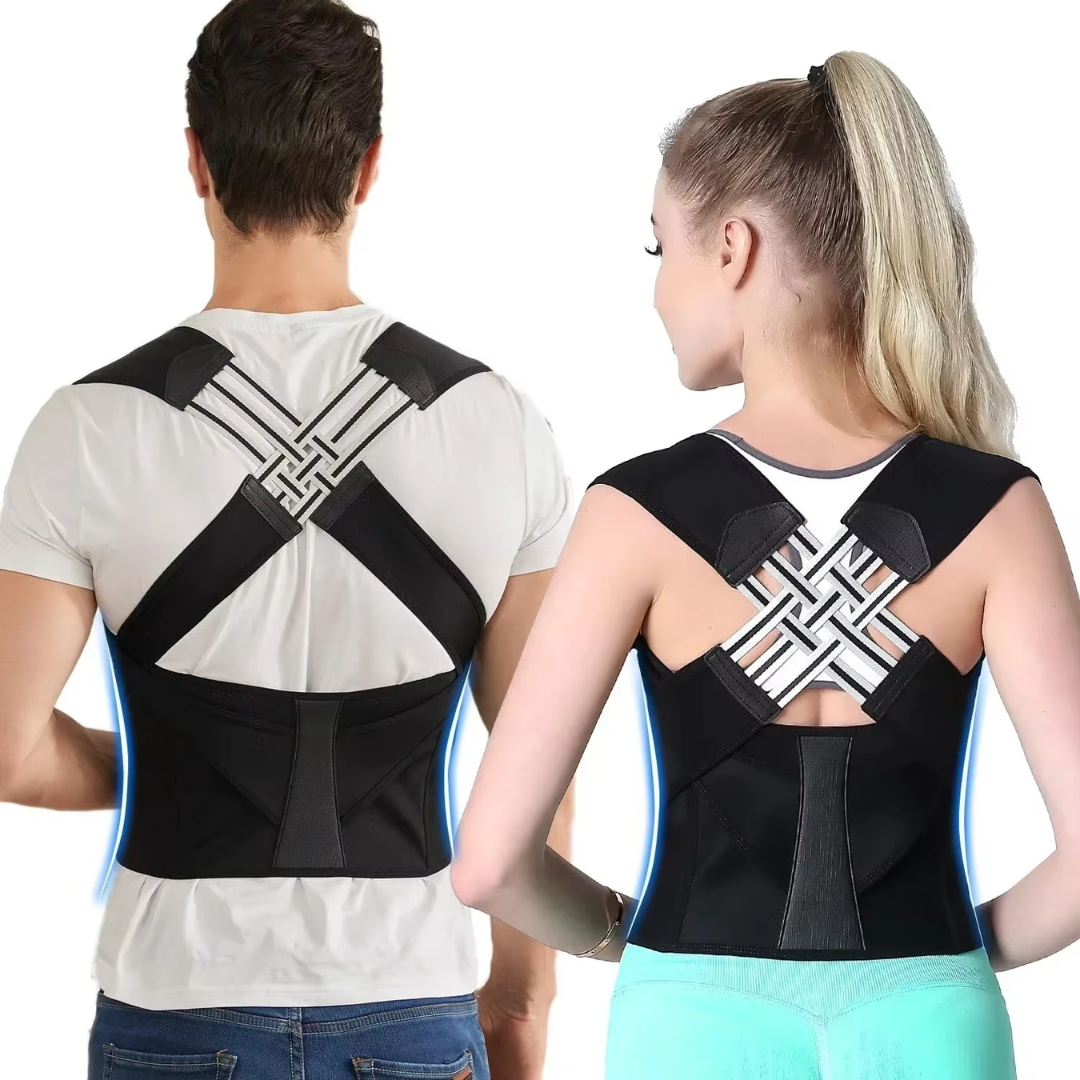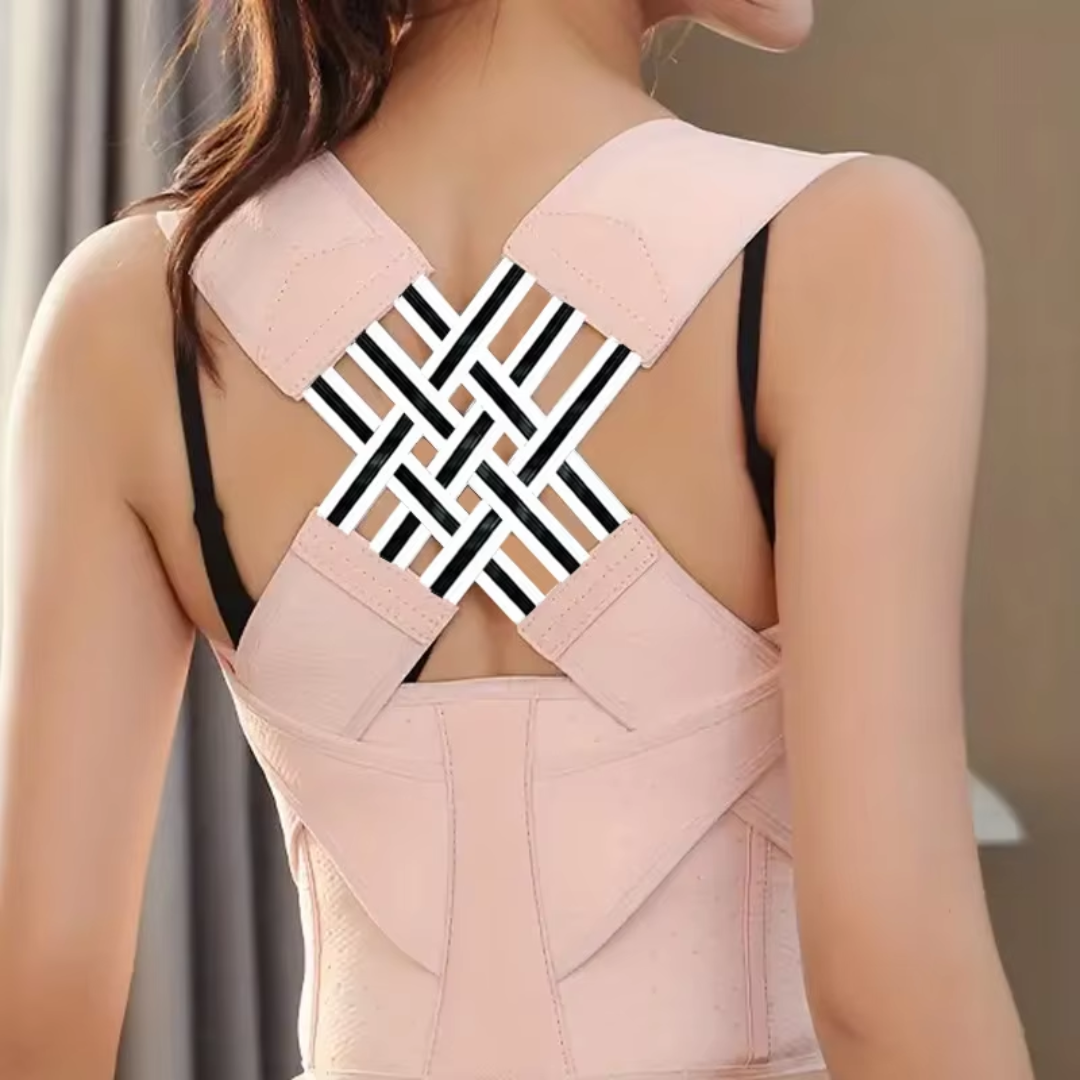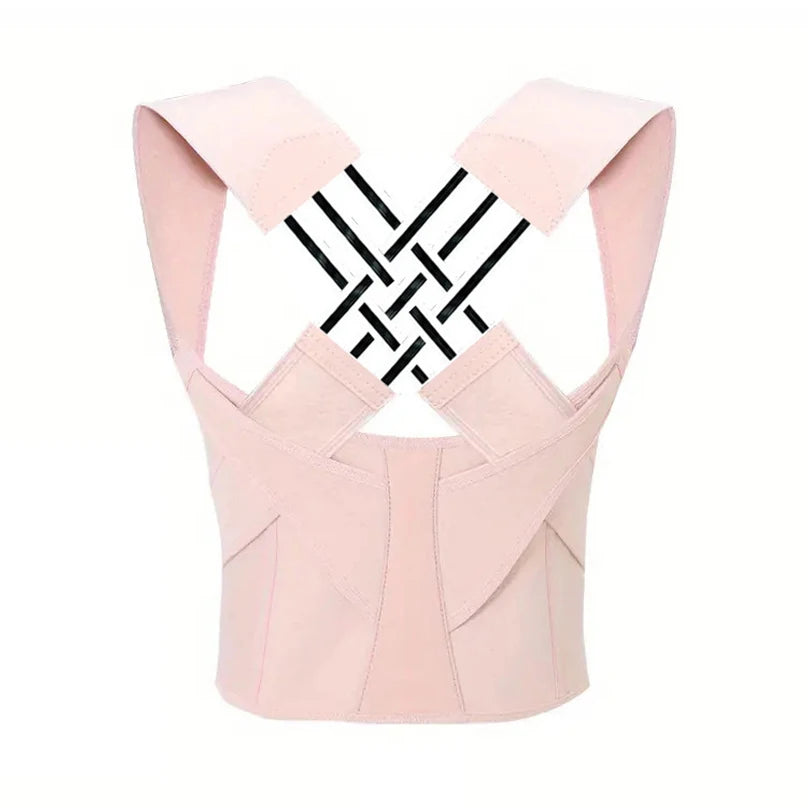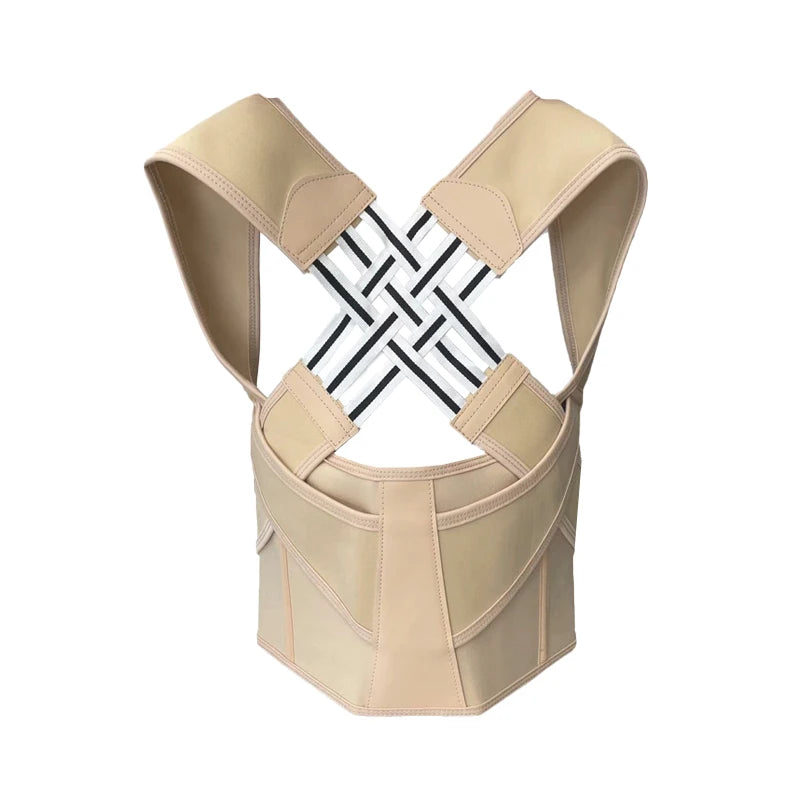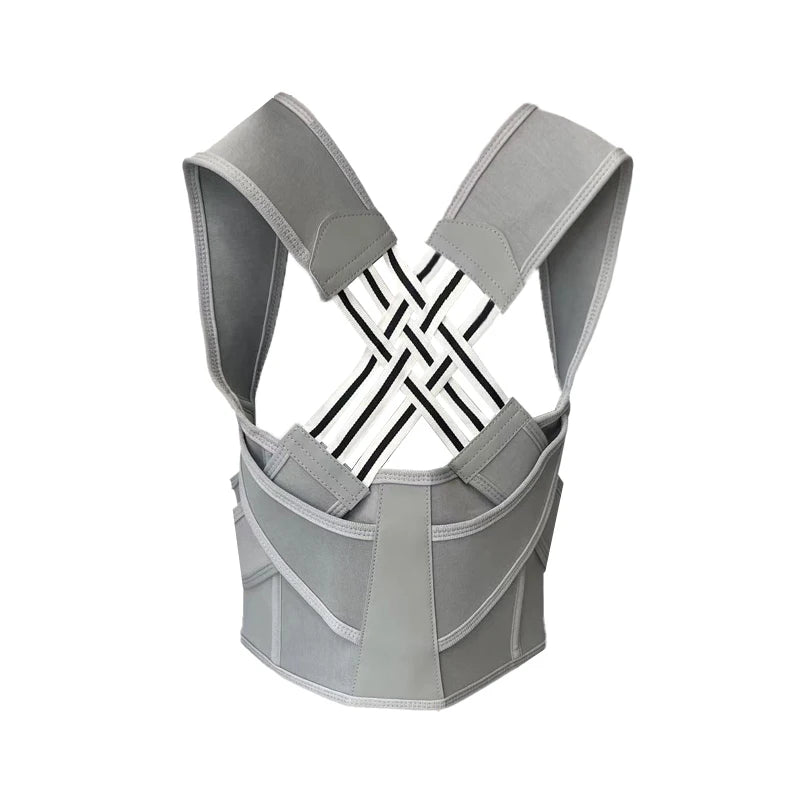Many people want to stand taller and feel better. This blog talks about good posture corrector materials that can help you. Keep reading to learn more!
Key Takeaways
- Breathable materials like neoprene and mesh fabric keep you cool and comfortable. They let air flow to reduce sweat.
- Memory foam and medical-grade silicone offer more support without irritating the skin. These advanced materials fit your body well.
- Look for posture correctors with durable, adjustable straps. This makes them last longer and stay in place better.
- Choosing eco-friendly options like recycled nylon or natural rubber helps the environment. These sustainable materials are good for making posture correctors too.
- Washable, easy-to-maintain designs save time and keep the corrector fresh for daily use.
Importance of Choosing the Right Posture Corrector Material

Picking the right material for your posture corrector is key. Good materials make the brace comfortable and effective. They help in spine alignment and offer back support without skin irritation.
Materials like breathable neoprene and soft mesh let air flow reduce sweat and discomfort during long wear times. This means you can wear them longer with less hassle, supporting better posture every day.
Durable materials also ensure your back brace lasts a long time, even with daily use, making it a smart buy for chronic back pain relief.
Common Materials Used in Posture Correctors
Common materials used in posture correctors include neoprene, which offers softness and breathability for all-day wear. Moreover, mesh fabric provides enhanced ventilation and comfort to ensure proper airflow while wearing the posture corrector.
Neoprene: Softness and Breathability
Neoprene stands out for its softness and breathability. This material is perfect for posture correctors because it feels good on the skin. It also lets air pass through, keeping you cool.
People looking for back support find neoprene helpful. It is light and does not rub against the skin harshly.
Posture correctors made from neoprene help improve spine alignment without causing discomfort or sweat. This material is durable too, making it a smart choice for everyday use. Whether you need support while sitting at your desk or during a workout, neoprene can handle it.
Its flexibility means it moves with your body, ensuring better posture over time.
Mesh Fabric: Enhanced Ventilation and Comfort
Mesh fabric stands out in posture correctors for its air flow. It lets skin breathe, making it comfy to wear for hours. This fabric is key for those who want to keep cool while working on their spine alignment or getting back pain relief.
Mesh makes posture correctors not just breathable but also light.
Breathable material like mesh fabric ensures comfort and prevents sweat build-up.
Adjustable straps and hook-and-loop fasteners fit well with mesh's flexibility. They let you adjust your posture corrector without losing comfort or support. This combination helps people aiming for better posture without feeling trapped by their back support gear.
Plus, being easy to wash adds to the mesh's appeal, fitting the need for a clean and fresh-feeling posture aid every day.
Elastic Nylon: Flexibility and Durability
Elastic nylon is a top choice for posture corrector straps due to its flexibility and lasting power. This material allows the user to move comfortably while providing the necessary support for improved posture.
It's durable, so you can rely on it for long-term use without worrying about wear and tear. When combined with adjustable straps, elastic nylon ensures a customized fit that stays in place, promoting proper spine alignment and lessening back pain.
Foam Padding: Added Cushioning and Support
Foam padding is a vital component in posture correctors. It provides extra comfort and support, reducing strain on the back muscles. The cushioning effect of foam padding ensures that the posture corrector feels gentle against your skin, making it more comfortable to wear for longer periods.
When choosing a posture corrector, look for one with added foam padding as this will provide you with enhanced cushioning and support, helping to alleviate back pain. Foam padding acts as a buffer between your body and the corrective structure of the device.
This ensures that you experience relief from discomfort while simultaneously receiving necessary support for better posture alignment throughout the day.
Considered an essential material in modern-day posture correction tools, foam padding offers unparalleled benefits when crafting an effective and comfortable solution for alleviating chronic back pain and improving overall spinal alignment.
Advanced Materials for Enhanced Posture Correction
When it comes to advanced posture correction materials, there are various options that can elevate the effectiveness of posture correctors. These innovative materials include memory foam, medical-grade silicone, and magnetic inserts, tailored to provide personalized support for your body and promote circulation and pain relief. With these advanced materials, you can enjoy increased comfort and improved spine alignment while effectively addressing chronic back pain.
Memory Foam: Contouring Support for the Body
Memory foam is a material that molds to the shape of your body, providing personalized support. It's often used in posture correctors to help distribute weight evenly and reduce pressure points.
This can be especially beneficial for individuals with back pain or those seeking extra comfort while wearing a posture corrector throughout the day. The memory foam's ability to adapt to your body helps maintain proper alignment of the spine, promoting better posture and reducing strain on muscles.
Moreover, memory foam has an impressive feature that allows it to return to its original shape when not in use, ensuring durability and long-lasting support for the user. Its molding properties make it an excellent choice for those who value both comfort and effective spinal alignment in their posture correctors.
Medical-Grade Silicone: Non-Irritating and Skin-Friendly
Medical-grade silicone is a skin-friendly material that is non-irritating. It's gentle and safe for your skin, making it an excellent choice for posture correctors. Its non-irritating properties ensure comfort and ease of wear, especially for those with sensitive skin.
This material is also durable and doesn't degrade easily, ensuring long-lasting performance of the posture corrector. Also, medical-grade silicone offers a snug fit without causing chafing or discomfort, providing a comfortable experience while promoting better posture and back support.
Magnetic Inserts: Promoting Circulation and Pain Relief
Magnetic inserts in posture correctors help enhance blood circulation and reduce discomfort. Studies have demonstrated that these inserts can effectively alleviate chronic back discomfort by improving blood flow to the affected area, leading to reduced unease.
Magnetic therapy has been seen to boost natural healing processes and support overall well-being. When selecting a posture corrector with magnetic inserts, it's crucial to choose skin-friendly materials and adjustable straps to ensure maximum comfort and effectiveness.
According to expert reviews, posture correctors equipped with magnetic inserts, such as the VOKKA Posture Corrector available on Amazon Prime, are crafted to offer targeted relief while encouraging proper spine alignment.
By integrating advanced materials like medical-grade silicone alongside magnetic inserts, these posture correctors provide a comprehensive approach to easing back discomfort and enhancing posture.
Features to Look for in Posture Corrector Materials
When you decide to buy a posture corrector, it's crucial to consider certain features. Look for materials that are light and breathable, easy to wash and maintain, and gentle on the skin.
These qualities can enhance your experience when using a back support product.
The design of posture corrector materials should prioritize being lightweight and breathable for comfort. Consider the ease of cleaning as well as how friendly they are to your skin.
An ideal choice would be ones with anti-chafing surfaces that make them comfortable for extended wear throughout the day.
Lightweight and Breathable Properties
When choosing a posture corrector, it is important to consider lightweight and breathable materials for comfort and skin-friendliness. Posture correctors made with breathable fabrics such as mesh fabric or medical-grade silicone allow air circulation, reducing sweat buildup and skin irritation.
Lightweight materials like elastic nylon make the posture corrector easy to wear for extended periods without feeling cumbersome.
The Upright Go, recommended by experts, utilizes advanced lightweight materials that offer breathability, ensuring comfort during prolonged use. The VOKKA Posture Corrector is also recognized for its lightweight and breathable properties due to the use of modern materials created for improved ventilation and reduced weight on the body.
Additionally, vibration reminders in some posture correctors help enhance blood lactate levels in muscles during various activities like weight lifting or deadlifting. These features improve the overall user experience while promoting better spine alignment and posture improvement.
By integrating these advanced yet lightweight materials into posture correctors, users can find both comfort and effectiveness in their journey towards achieving better posture.
Washable and Easy-to-Maintain Design
Posture correctors with washable and easy-to-maintain designs are practical for daily use. They can be quickly cleaned to maintain hygiene, making them ideal for regular wear. The washable feature ensures that the posture corrector remains fresh and free from odor, promoting comfort and convenience throughout the day.
Users can easily keep their posture corrector in good condition by following simple cleaning instructions, enhancing its longevity and performance.
When considering a posture corrector, look for materials that are machine washable or require minimal effort to clean. This feature allows users to incorporate the posture corrector seamlessly into their routine without added hassle or time-consuming maintenance.
With washable and easy-to-maintain designs, individuals can confidently prioritize better posture without worrying about cumbersome upkeep.
Skin-Friendly and Anti-Chafing Surfaces
The materials utilized in posture correctors play a crucial role in preventing skin irritation and chafing. For individuals with sensitive skin or those who wear the corrector for extended periods, such as athletes or individuals with chronic back pain, it's essential to seek materials that are gentle on the skin.
Choosing posture correctors made from antibacterial and hypoallergenic fabrics can help prevent potential irritations and discomfort. Furthermore, looking for materials with moisture-wicking properties can assist in keeping the skin dry and free from chafing.
It is wise to select posture correctors crafted from breathable and lightweight materials that allow air circulation while wearing them. This helps reduce sweat buildup, lower the risk of chafing, and provide comfort even during prolonged use.
Some advanced options include medical-grade silicone surfaces designed to be non-irritating while promoting healthy skin contact. These aspects contribute to creating an environment where users feel confident about avoiding any potential discomfort associated with wearing a posture corrector regularly.
Factors Affecting Durability of Posture Corrector Materials
Factors affecting the durability of posture corrector materials include resistance to wear and tear, as well as the longevity of elastic and adjustable straps. To learn more about these important considerations, explore our full blog for valuable insights into selecting the best posture corrector materials.
Resistance to Wear and Tear
The durability of posture corrector materials is crucial for long-term use. Factors like elasticity and the quality of adjustable straps play a significant role in resisting wear and tear.
It's important to choose materials that can withstand regular use without compromising on comfort or support. In addition, selecting posture correctors made from sustainable and eco-friendly materials not only benefits the environment but also ensures their longevity.
Taking into account consumer reports on the best posture correctors for both men and women reflects the importance of picking durable materials that are able to stand up to daily wear.
Furthermore, considering options with recyclable nylon and polyester aligns with an environmentally conscious approach while enhancing wear resistance.
Longevity of Elastic and Adjustable Straps
Elastic and adjustable straps play a crucial role in the durability of posture correctors. These straps must endure constant stretching and adjusting without sacrificing elasticity or strength.
The lifespan of these straps may vary, lasting anywhere from several months to a few years based on usage and quality.
It is important to emphasize the resilience of the elastic and adjustable straps when searching for a posture corrector. Look for resilient materials such as high-quality nylon or reinforced elastic that can preserve their elasticity over time.
Additionally, examine the stitching to ensure it can withstand frequent adjustments without coming apart. By prioritizing durability in these vital components, you ensure prolonged effectiveness and support from your posture corrector while reducing the need for replacements.
Environmental and Sustainable Material Options
When it comes to being eco-friendly, we have everything you need.
Eco-Friendly Neoprene Alternatives
There are several eco-friendly alternatives to neoprene that are being used in posture correctors. These include natural rubber, TPE (thermoplastic elastomer), and EVA foam (ethylene-vinyl acetate).
Natural rubber is derived from the sap of rubber trees and is biodegradable, making it an environmentally friendly choice. TPE is a recyclable material that can be reused to create new products, reducing waste and environmental impact.
EVA foam is a lightweight and durable material made from ethylene and vinyl acetate, offering similar properties to neoprene but with reduced environmental harm. These alternatives provide sustainable options for posture corrector materials while maintaining the necessary comfort and support for users.
It's crucial to prioritize the use of eco-friendly materials in manufacturing posture correctors as part of sustainable practices. Many consumers are increasingly conscious about choosing products that have minimal negative impact on the environment.
By utilizing these alternative materials, manufacturers can meet this demand for sustainable options without compromising on quality or performance. Incorporating these materials enhances the overall appeal of posture correctors by catering to environmentally conscious consumers while contributing positively towards a greener future.
Recycled Nylon and Polyester Materials
Recycled nylon and polyester materials offer an environmentally friendly option for posture correctors. These sustainable materials reduce the consumption of new resources while minimizing waste.
Posture correctors made from recycled nylon and polyester are durable, lightweight, and breathable, providing comfortable support without compromising environmental responsibility.
By choosing products crafted from these recycled materials, individuals can contribute to minimizing their ecological footprint while enjoying the benefits of effective posture correction.
Conclusion
Selecting the appropriate posture corrector material is essential for comfort and efficacy. Seek out breathable materials such as neoprene, mesh fabric, or elastic nylon to ensure skin-friendly wear.
Advanced alternatives like memory foam or medical-grade silicone provide improved support without causing skin irritation. Give preference to lightweight, washable designs with durable straps for extended use.
Take into account sustainable options like recycled nylon and polyester for environmentally conscious choices. Keep in mind to choose posture correctors supported by experts and research to maximize advantages and minimize potential side effects.
With the right materials, a posture corrector can offer immediate relief while encouraging better posture over time.
FAQs
1. What makes a posture corrector the best choice for back support?
The best posture correctors offer spine alignment and back pain relief. They're made from lightweight, breathable materials with adjustable straps to ensure a perfect fit. Features like hook-and-loop straps and repositionable back buckle pads enhance their comfort.
2. How can an adjustable posture corrector lead to better posture?
An adjustable posture corrector helps you maintain proper spine alignment by gently pulling your shoulders back. This encourages muscle memory for maintaining better posture, leading to significant improvements over time.
3. What should I look for in the material of a posture corrector?
Look for breathable and lightweight materials that won't cause discomfort or skin irritation even after long periods of use. Anti-bacterial properties are also beneficial as they help keep the product clean and hygienic.


